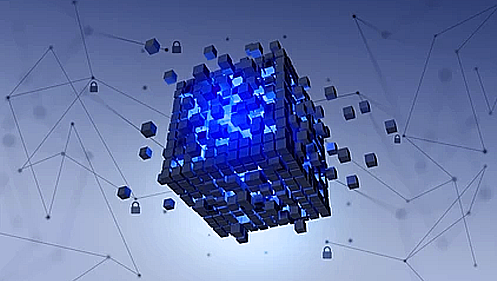Accredited InvestorsAltcoinAnatoli UnitskyAnti-Money Laundering (AML) In CryptoAPIArbitrageArtCoin TokenArticle DirectoryASICAuction Terminology GlossaryBasics of Stock Market InvestingBear MarketBest Crypto Payment Provider In the WorldBitcoinBlockchainBlockchain ConfirmationBlockchain Consensus MechanismBlockchain ForkBlockchain GlossaryBored Ape Yacht ClubBuild a Business That OutperformsBull MarketBuying SkyWay SharesByzantine Fault Tolerance (BFT) ExplainedCasascius CoinCentral Bank Digital Currency (CBDC)Centralized Crypto ExchangeCoinCoinsetCold WalletCollateralCommodity Futures Trading Commission (CFTC)Cross-Chain TechnologyCRUCrypto ExchangeCrypto GlossaryCrypto JokesCrypto Terms to KnowCrypto TickerCryptocurrencyCryptographyCryptojackingCryptounit BlockchainCryptounit GlossaryCryptounit ProgramdApp (Decentralized Application)Dead CoinDecentralized Exchange (DEX)Decentralized Finance (DeFi)Difference Between Bitcoin and EthereumDifferent Ways of Investing MoneyDigital CurrencyDistributed LedgerDo Your Own Research (DYOR)Dollar Cost Averaging (DCA)Dow Jones Industrial Average (DJIA)EncryptionERC-20ERC-721EthereumEvoScentFear Of Missing Out (FOMO)Fear, Uncertainty and Doubt (FUD)Fiat MoneyFNT Fintech CompanyGenesis BlockGlobal Unit PayGlossary of Banking TermsGlossary of Business TermsGlossary of Financial TermsHalvingHODLHot WalletHow Do I Start InvestingHow Rich is Satoshi Nakamoto?How to Create a BlockchainHow to Find Private InvestorsHow to Get Into FintechHow to Program Smart ContractsI Am Thrilled to Be a Part of This Global ProjectInitial Coin Offering (ICO)Initial Public Offering (IPO)Initial Token Offering (ITO)Innovation Basalt TechnologyInnovative Transportation TechnologiesInternational Bank Account Number (IBAN)Investing in Gold Mining StocksInvesting in Gold MiningJagerJoy of Missing Out (JOMO)Know Your Customer (KYC)LedgerLiquidity in CryptocurrencyMaker and Taker Fees in Crypto TradingMarket Capitalization (Market Cap)Meme CoinMetal Credit CardMetaMaskMillenials Now Have Access to Generational WealthMy Best Investment EverNew Digital EvolutionNFT GlossaryOff-Chain TransactionsOn-Chain TransactionsOpen Edition NFTPeer-to-Peer (P2P)Personal Loan GlossaryProbably the Best STO on the MarketProof of Stake (PoS)Real Estate Glossary of TermsReal Estate Investing GlossaryRebase TokenSecurities and Exchange Commission (SEC)Security Token ExchangesSecurity Token Offering (STO)Soulbound Decentralized Identities for Security TokensSoulbound ID Launch by Stobox Proves a SuccessSoulbound TokensStoboxStock Market GlossaryTestimonialsTether Platform and Token (USDT)UnitEx ExchangeUnitsky String TechnologiesUNTBUSDUValidatorWe Started Investing When We Were 25What are Blue Chip NFT?What are Blue Chip Stocks?What are Crypto Assets?What are Crypto Smart Contracts?What are CryptoPunks NFT?What are Digital Assets?What are Digital Collectibles?What are Gas Fees?What are Gas Wars?What are Hashmasks?What are Non Fungible Tokens?What are Non-Sufficient Funds (NSF)?What are Soulbound Tokens (SBT)?What are Stablecoins in Crypto?What are Transactions Per Second (TPS)?What are Utility NFTs?What are Utility Tokens?What Does Burning Crypto Mean?What Does Diamond Hands Mean?What Does Paper Hands Mean?What Does To The Moon Mean?What Does WAGMI Mean?What Happened to Satoshi Nakamoto?What is a 51% Attack?What is a Baby Boomer?What is a Backlink?What is a Banner?What is a Barcode?What is a Bid-Ask Spread in Crypto?What is a Block in Blockchain?What is a Block Reward?What is a Blockchain Address?What is a Blockchain Node?What is a Blockchain Oracle?What is a Blog?What is a Bond?What is a Bot?What is a Broker?What is a Business Accelerator?What is a Cash Cow?What is a Commercial Bank?What is a Commodity?What is a Con?What is a Credit?What is a Credit Limit?What is a Credit Rating?What is a Crypto Airdrop?What is a Crypto Bridge?What is a Crypto Scam?What is a Crypto Token?What is a Crypto Wallet?What is a Crypto Whale?What is a Crypto Winter?What is a Cryptocurrency Public Ledger?What is a Cryptocurrency Roadmap?What is a DAO?What is a Dark Pool?What is a Day Trader?What is a Dead Cat Bounce?What is a Default?What is a Derivative?What is a Digital Credit Card?What is a Fiscal Quarter?What is a Fungible Token?What is a Governance Token?What is a Grace Period?What is a Hard Fork?What is a Hot Wallet?What is a Hybrid Blockchain?What is a Hybrid PoW/PoS?What is a Joint Account?What is a Market Cap?What is a Merkle Tree in Blockchain?What is a Mining Farm?What is a Nonce? What is a PFP NFT?What is a POS System?What is a Prepaid Card?What is a Private Blockchain?What is a Private Key?What is a Public Blockchain?What is a Public Key?What is a Reserve Currency?What is a Ring Signature?What is a Routing Number?What is a Rug Pull in Crypto?What is a Safe Deposit Box?What is a Satoshi?What is a Security Token?What is a Seed Phrase?What is a Shitcoin?What is a Sidechain?What is a Soft Fork?What is a Spot Market?What is a State Bank?What is a SWIFT Code?What is a Tax Identification Number (TIN)?What is a Time Deposit?What is a Transaction Account?What is a Variable Interest Rate?What is a Virtual Assistant (VA)?What is a Virtual Card?What is a Virtual Currency?What is a Visa Card?What is a Whitelist in Crypto?What is a Whitepaper?What is Accounts Payable (AP)?What is AMA in Crypto?What is Amortization?What is an Accrual?What is an ACH Transfer?What is an Actuary?What is an Addendum?What is an Algorithm?What is an Angel Investor?What is an Annuity?What is an Asset?What is an ATM?What is an Atomic Swap?What is an Audit?What is an Avatar?What is an EIN?What is an Embargo?What is an Entrepreneur?What is an IDO (Initial Dex Offering)?What is an Interest Rate?What is an Internet cookie?What is an Investment Bank?What is an NFT Drop?What is an NFT Floor Price?What is an Ommer Block?What is an Orphan Block?What is an Outstanding Check?What is an Overdraft?What is Artificial Intelligence (AI)?What is B2B (Business-to-Business)?What is B2G (Business-to-Government)?What is Bartering?What is Bitcoin Dominance?What is Bitcoin Pizza Day?What is Blockchain Immutability?What is Blockchain Used For?What is BRICS?What is Business-to-Consumer (B2C)?What is C2C (Customer to Customer)?What is Capitalism?What is Catfishing?What is CFD Trading?What is Check Kiting?What is Cloud Mining?What is Communism?What is Content Marketing?What is Decentralization in Blockchain?What is DeFi in Crypto?What is Delisting?What is Depreciation?What is Digital Marketing?What is Diversification?What is Double Spending?What is Dumb Money?What is Dumping?What is Earnings Per Share (EPS)?What is Economics?What is Email Marketing?What is Equity?What is Etherscan?What is Fintech?What is Foreign currency?What is Forex?What is Fundamental Analysis (FA)?What is GameFi?What is Generative Art NFT?What is Gwei?What is Hard Currency?What is Hash Rate?What is Hashing in Blockchain?What is Inflation?What is Initial Game Offering (IGO)?What is Interest?What is Interest Income?What is Mainnet?What is Mastercard?What is Metaverse in Crypto?What is Mining in Cryptocurrency?What is Minting NFT?What is Mobile Banking?What is Money Laundering?What is NFT Alpha?What is NFT Metadata?What is NFT Rarity?What is NGMI Meaning?What is Nominal Interest Rate?What is Online Banking?What is Open-End Credit?What is OpenSea NFT Marketplace?What is Personal Identification Number (PIN)?What is Play-to-Earn?What is Polygon?What is Proof of Authority (PoA)?What is Proof of Work (PoW)?What is Public Key Cryptography?What is Pump and Dump?What is Quantum Computing?What is Refinancing?What is Retail Banking?What is Ripple?What is Sharding?What is Slippage in Crypto?What is Smart Money?What is Solvency?What is Soulbound ID?What is SSL?What is Staking in Cryptocurrency?What is Technical Analysis (TA)?What is Testnet?What is the Ask Price?What is the Better Business Bureau (BBB)?What is the Bid Price?What is the Dark Web?What is the InterPlanetary File System (IPFS)?What is the Gold Standard?What is the Lightning Network?What is the Prime Rate?What is the Sandbox?What is the Secondary Market?What is the World Bank?What is Tier 1 Capital?What is Tokenomics?What is TRC-20?What is Universal Banking?What is Unspent Transaction Output (UTXO)?What is Usury?What is Volatility in Crypto?What is Wash Trading?What is Web3?What is Whisper?What is XRP?What is Zero-Knowledge Proof (ZKP)?Who is Beeple?Who is Satoshi Nakamoto?Who is Vitalik Buterin?Why Tokenization is a Safe HavenWhy You Should Try Your Hand at Trading
What is the Lightning Network?
- Home
- Blockchain Glossary
- What is the Lightning Network?
In recent years, the Lightning Network has emerged as a promising solution to the scalability issues faced by cryptocurrencies, particularly Bitcoin.

It is a layer 2 solution that is designed to facilitate fast and low-cost transactions, making it an attractive alternative to traditional payment methods.
The Lightning Network was first proposed by Joseph Poon and Thaddeus Dryja in 2015 as a solution to the scalability issues faced by Bitcoin. At the time, the network could only process a limited number of transactions per second, which resulted in slow confirmation times and high transaction fees. The Lightning Network was designed to enable instant transactions with minimal fees by enabling off-chain transactions.
What is the Lightning Network?
In essence, the Lightning Network is a network of payment channels that are created between two parties. These channels allow users to make instant payments to each other without the need for confirmation on the blockchain. The transactions are instead conducted off-chain, with the settlement of funds occurring on the blockchain only when the channel is closed.
To use the Lightning Network, a user needs to open a payment channel with another user. This involves creating a multi-signature address on the blockchain, where both parties contribute funds to the channel. Once the channel is established, the two parties can exchange funds instantly and as many times as they wish without the need to broadcast each transaction to the network. The channel can remain open indefinitely until one of the parties decides to close it.
The Lightning Network also allows for the creation of multi-hop payments, where payments can be routed through several payment channels to reach their destination. This enables the network to scale to millions of transactions per second, making it an ideal solution for micropayments and other small transactions.
One of the most significant benefits of the Lightning Network is that it reduces transaction fees significantly. With traditional blockchain transactions, users are required to pay a fee that is proportional to the size of the transaction. This fee can be prohibitively expensive for small transactions, making it difficult to use cryptocurrencies for day-to-day purchases. With the Lightning Network, however, transaction fees are minimal, making it possible to use cryptocurrencies for small transactions without incurring high fees.
How Does the Lightning Network Work?
The Lightning Network operates by utilizing smart contracts to establish payment channels between pairs of users off the blockchain. This allows for quick transfer of funds between parties. What's innovative is that the network doesn't require connections between every user; even if User A has a channel with User B and User C has a channel with User B but not User A, they can still transfer funds. Lightning addresses resemble typical Bitcoin addresses, and the payment process is comparable for users.
When users are done with their payment channels, they can settle their final balances on the core blockchain. As only the opening and closing of payment channels are logged on the core blockchain, the whole Bitcoin network operates more swiftly. In addition, Lightning Network transactions may offer greater privacy than main blockchain transactions, which all appear on a public and transparent ledger.
Concerns About the Lightning Network
The Lightning Network, which aims to be decentralized, faces several concerns, with the potential replication of the hub-and-spoke model being the most significant. This model, which characterizes current financial systems, relies on banks and financial institutions as the primary intermediaries for all transactions.
Businesses that invest in Lightning Network nodes may become centralized nodes or hubs in the network by having more open connections with others, raising concerns about the system's centralization. Other concerns include fraud, fees, hacks, and price volatility.
One of the risks of using the Lightning Network is channel closure and going offline, which could lead to fraudulent channel close. For example, if John and Sally conduct a transaction, and Sally closes the channel after transferring goods while John is still online, John could use a technique called a fraudulent channel close to steal coins from Sally.
To prevent such fraudulent activity within the Lightning Network, third parties known as watchtowers run on nodes to monitor transactions and prevent fraudulent channel close.
The Bottom Line
The Lightning Network is a layer 2 solution that has the potential to revolutionize the way we use cryptocurrencies. Its ability to enable fast, low-cost transactions with minimal fees makes it an attractive alternative to traditional payment methods. As the network continues to evolve and grow, it is likely to become an increasingly important part of the cryptocurrency ecosystem.
Related Articles

What Are Transactions Per Second (TPS)?
Layer-two solutions, such as the Lightning Network, enable transactions to be conducted off-chain, reducing the burden on the main...

Blockchain
Blockchain transactions take place on a peer-to-peer network of geographically dispersed computers (nodes). Each node keeps a copy of...

What are Crypto Smart Contracts?
Smart contracts are a characteristic of second-generation cryptocurrencies, particularly Ethereum, which popularized the idea when it debuted in...

What is a Blockchain Node?
After the nodes have validated the new transactions, they are grouped into blocks. Each new block is added to the blockchain according to the rules of...
- Home
- Blockchain Glossary
- What is the Lightning Network?